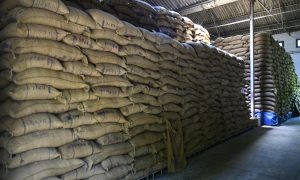Bangladesh ranks 3rd in global rice production

Bangladesh has ranked third globally in rice production for the fourth consecutive year with a projected output of 38.4 million tonnes.
The Food and Agriculture Organisation (FAO) published the ranking in its report titled ‘Food Outlook-June 2022’.
In the report, the FAO projected that Bangladesh’s rice production will be increased by 1.4 percent in 2022.
China tops the list with a projected output of 146.1 million tonnes, followed by India’s second 127.4 million tonnes. Indonesia is ranked fourth with an output 35.2 million tonnes, according to the report.
Rice production in China increased by 0.20 percent while the growth is 0.90 percent in India, 1.4 percent in Bangladesh and 0.90 percent in Indonesia compared to last year.
“World rice production to remain close to the 2021 all-time high,” the report mentions, adding, “The 2022 season is by now well-advanced south of the equator, where harvests of the first or sole crop of the season have wrapped up, while in the northern hemisphere, sowings of 2022 crops have just begun.”
“Although much will depend on weather patterns, especially in the context of the lingering La Niña conditions, FAO pegs its preliminary forecast for world rice production in 2022 at 519.5 million tonnes (milled basis), implying a minor (1.4 million tonnes) drop from the 2021 record-high and the second-largest harvest on record.”
Rice production has increased by three times since the liberation of Bangladesh. Bangladesh was fourth in rice production with Indonesia being third, India second and China first. Bangladesh produced 36.5 million tonnes of rice in 2019 and ranked third in the world for the first time that year. Bangladesh was in third place maintaining the continuity of production with a production of 37.4 million tonnes in 2020 and 37.8 million tonnes in 2021, according to the FAO report.
At the country level, Bangladesh, China (mainland), India, Indonesia, Malaysia and the Philippines are all seen ending 2022 with positive production results.
This should offset potential yield cuts stemming from lower input use and/or changes in the varietal structure of plantings in favour of less input-demanding strains in Cambodia, Thailand and Viet Nam. Limited availabilities of water for irrigation also cloud the outlook for Iraq, the Islamic Republic of Iran and Pakistan, with output also seen falling in the Republic of Korea and Japan.
Yet, the largest absolute Asian output contractions are forecast to take place in Sri Lanka and Myanmar, where scarce and inaccessible inputs, on the backdrop of broader economic constraints, weigh heavily on production prospects this year.
Source Link : https://www.daily-sun.com/printversion/details/626049















